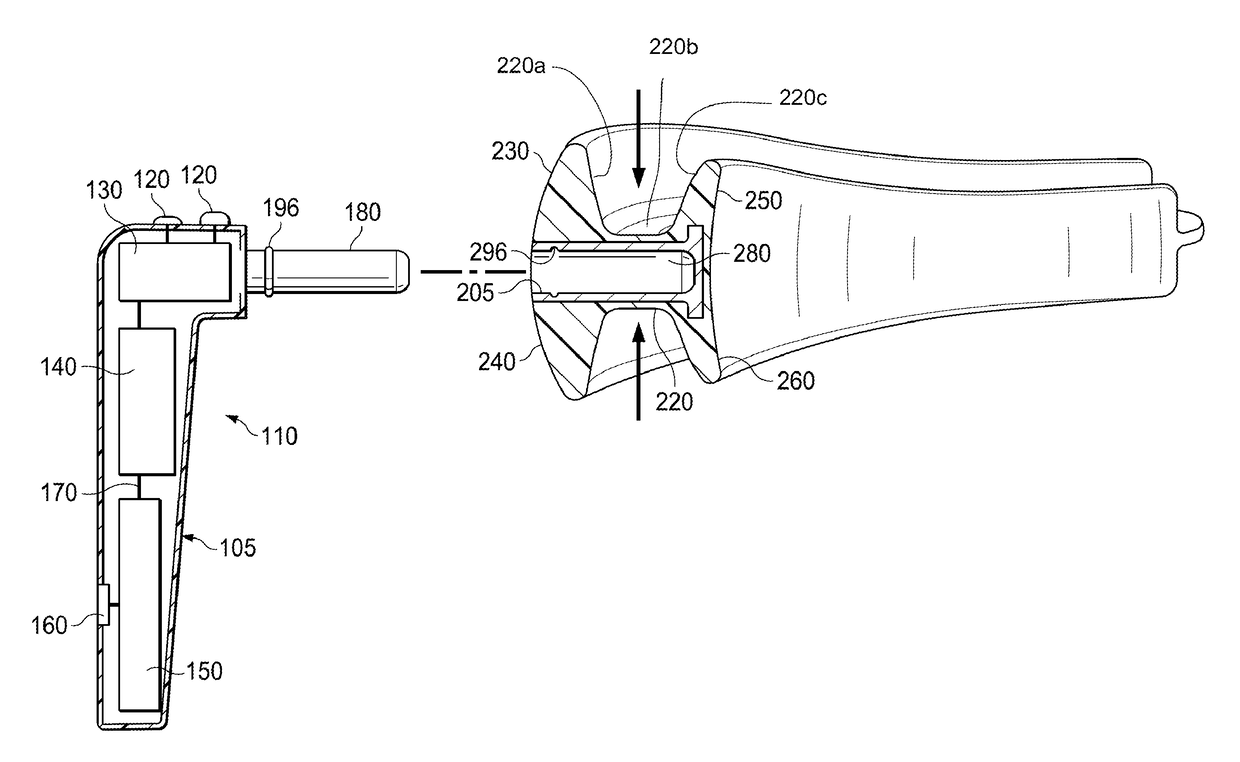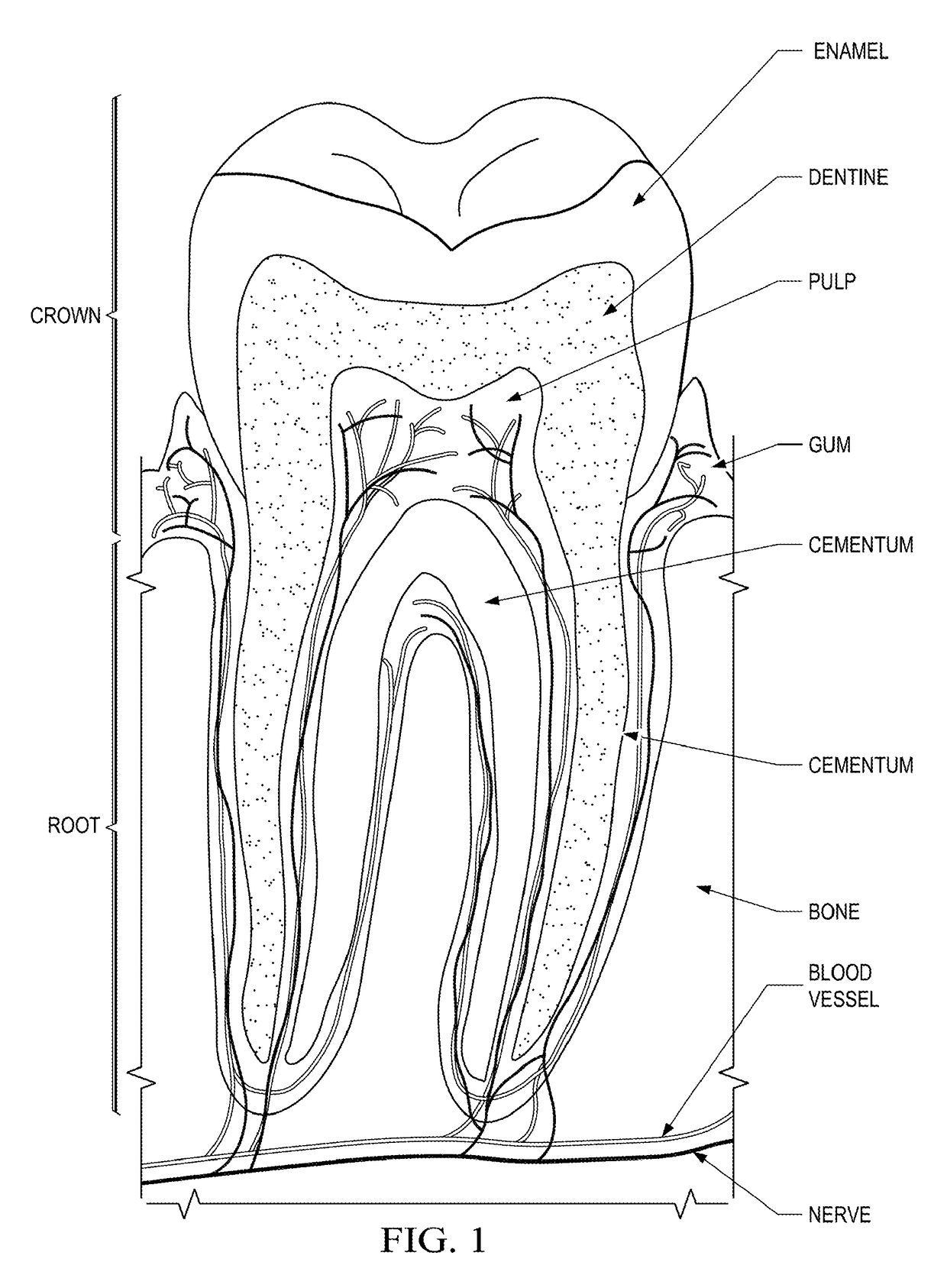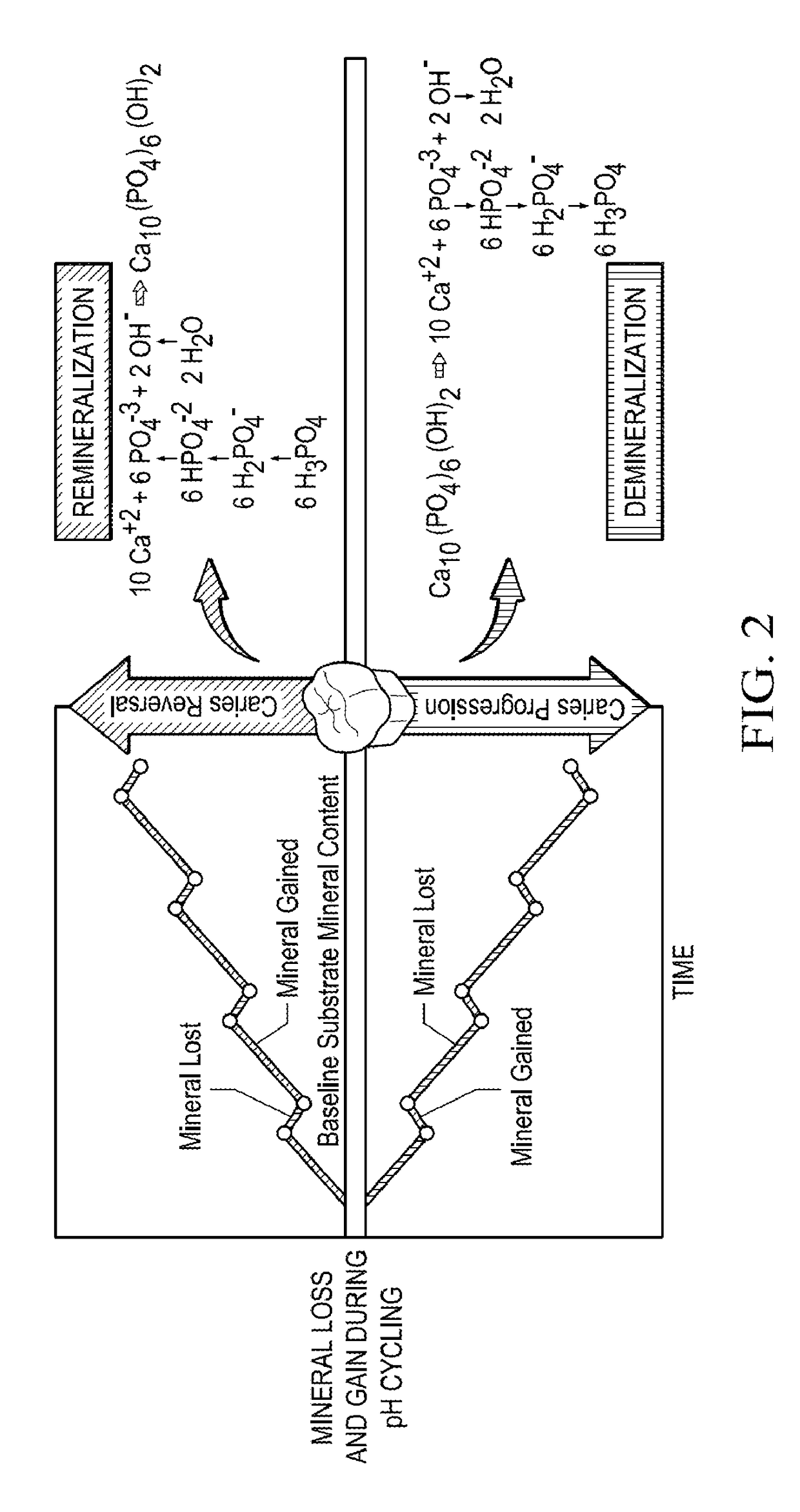Fluoride releasing bite plate
a fluoride and bite plate technology, applied in the field of bite plates, can solve the problems of ingestion of fermentable carbohydrates, enamel destruction, and susceptibility to demineralization processes
- Summary
- Abstract
- Description
- Claims
- Application Information
AI Technical Summary
Benefits of technology
Problems solved by technology
Method used
Image
Examples
Embodiment Construction
[0054]The fluoride compound can be intimately admixed with the polymer that forms the bite plate. Alternatively, it is possible to apply the fluoride compound by spraying or otherwise coating a thermoplastic resin bite plate with the compound and drying, if necessary, prior to packaging. As yet a third alternative, a strip of fluoride-loaded material can be applied to the tooth facing surfaces. As yet another alternative, the bite plate can comprise a removable fluoride-releasing core that is replaced after a number of uses, possibly indicated by color change. As yet another alternative, the bite plate can comprise a removable fluoride-releasing core that is replaced after each use. Single use removable fluoride-releasing core can be a simple absorbent pad saturated with a solution containing fluoride, then dried and packaged and sold for use.
[0055]Fluoride-releasing polymers and glasses are already known, and their effectiveness can be evaluated using double-distilled water, artifi...
PUM
 Login to View More
Login to View More Abstract
Description
Claims
Application Information
 Login to View More
Login to View More - R&D
- Intellectual Property
- Life Sciences
- Materials
- Tech Scout
- Unparalleled Data Quality
- Higher Quality Content
- 60% Fewer Hallucinations
Browse by: Latest US Patents, China's latest patents, Technical Efficacy Thesaurus, Application Domain, Technology Topic, Popular Technical Reports.
© 2025 PatSnap. All rights reserved.Legal|Privacy policy|Modern Slavery Act Transparency Statement|Sitemap|About US| Contact US: help@patsnap.com



